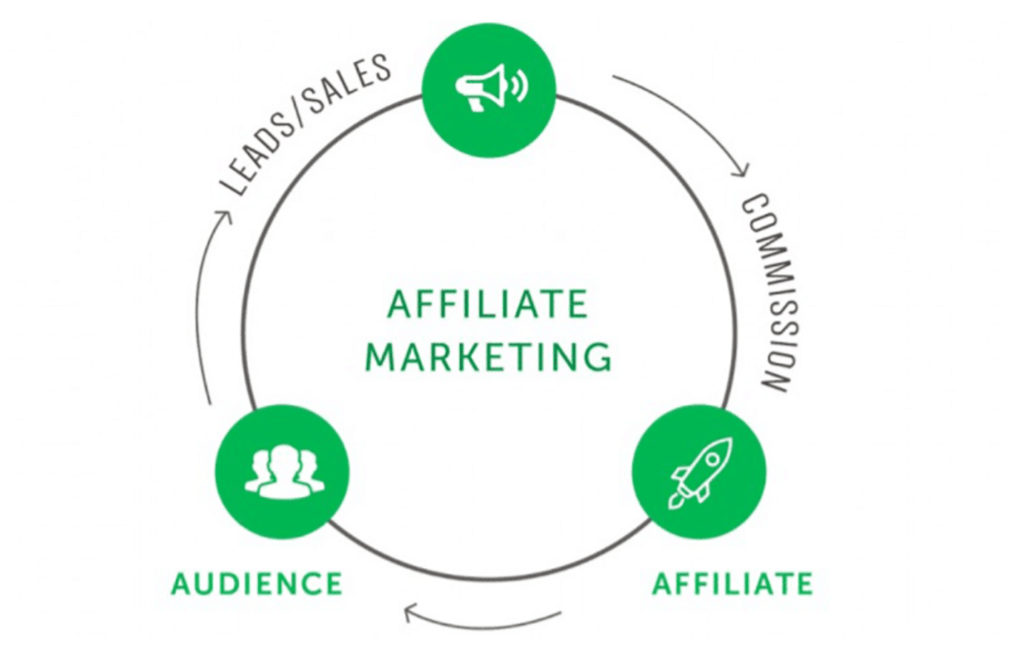We’re living through some seriously turbulent times. I know that this last week has left me not wanting to watch the news. It’s inescapable, though – even my TikTok feed is inundated with what’s happening on the stock market. I have to laugh when I can to keep my sanity!
Things that are keeping me going are the memes of the penguins on Heard and McDonald Islands, arming themselves in retaliation to the tariffs. But I digress.
With markets swinging wildly, (I think 6.6 trillion USD was wiped off the Stock Exchange as at 8 April 2025) global trade tensions on the rise, (104% tariff on China as at 8 April 2025) and the word “recession” creeping into more headlines by the day, it’s completely natural to feel shaken and uncertain. Whether you’ve seen your investments dip, your job security feel less certain, or you’re just sensing that the world is shifting beneath our feet… you’re not alone.
But here’s the thing — tough times don’t mean you’re out of options. In fact, history shows us that moments of economic uncertainty often spark the most creative, resourceful, and resilient solutions. One of those solutions? Affiliate marketing. It’s one of the most accessible, low-cost, and surprisingly powerful ways to start generating income from home — even when the rest of the world feels like it’s in freefall.
In this post, we’ll explore why affiliate marketing stands out as a recession-proof business model, and how you can begin tapping into its potential — without needing a huge budget, a warehouse full of products, or a degree in digital marketing.
Let’s get into it — and start building something that can weather any storm.
Understanding the Affiliate Marketing Landscape
Affiliate marketing creates an opportunity to earn income by promoting other people’s products. I have seen many businesses and individuals rely on this model when traditional business sectors face economic challenges. This business model requires minimal startup costs, which makes it accessible even during tough economic times. Products and services still need promotion, regardless of the economy. Businesses are willing to share profits as long as sales increase. This sharing model has helped many earn a supplemental or even a full-time income without significant financial risk.
The structure of affiliate marketing is simple. A merchant offers a product or service and provides affiliates a commission when they drive a sale. I have used affiliate programs from major companies and have noted that the structure benefits both sides. The merchant reaches a broader audience while the affiliate earns a commission on successful recommendations. The digital space has grown steadily with improved tracking and reporting systems. These systems help affiliates optimize campaigns and ensure they receive proper credit for the sales they generate, which adds a layer of transparency that is very important during unstable economic periods.

The digital world continues to expand. More consumers shop online and search for information on products before making a decision. This trend creates multiple opportunities for well-planned affiliate marketing strategies to thrive. The rising use of mobile devices and increasing penetration of the Internet means that the potential audience is larger than ever before. Moreover, recent technological advancements have opened up innovative paths that allow affiliates to target niche audiences with highly personalized content. These strategies have shown time and again that even in volatile economic climates, a solid affiliate marketing foundation can stand strong.
Projections indicate that by 2025, global e-commerce sales will reach around $6.86 trillion, continuing to grow at a compound annual growth rate (CAGR) of 7.8% and potentially surpassing $8 trillion by 2027.
To further illustrate the scope and historical significance of affiliate marketing, it is worthwhile to consider how the model has evolved over time. In the early days of the internet, affiliate marketing was a niche experiment operating largely behind the scenes. Today, it is a robust industry that powers millions of dollars in revenue every year. Many success stories now emerge where ordinary individuals have built entire careers around an online presence dedicated to sharing product recommendations and insights. This evolution from a small-scale tactical approach to a widely recognized revenue-generating strategy underscores its potential and its adaptability to changing market trends.
Getting Started with Affiliate Marketing
I began my affiliate marketing journey in 2017 by carefully studying the best practices and evaluating different platforms. The key is to understand the niche you want to target. I found that focusing on areas where I have experience and interest helps generate genuine trust with my audience. A well-chosen niche allows you to communicate naturally about products and persuade readers without feeling forced. Selecting a niche that not only interests you but also has a growing community behind it can lead to faster audience engagement and more effective monetization.
Beginners in affiliate marketing must recognize that the process is not simply about placing ads or links. You need to invest time in learning content creation, SEO strategies, and audience behavior. These skills ensure that your recommendations reach the right people. It is important to create authentic content that explains product benefits and genuine use cases. You should strive to build credibility and offer valuable insights that can help readers make informed decisions. In addition to the technical skills, understanding your audience’s needs and pain points plays a pivotal role. Sharing personal experiences and detailed product reviews builds reliability and fosters long-term loyalty, which is essential for sustainable income.
A good starting point is to identify reputable affiliate programs that align with your interests. You can sign up for multiple programs and compare the commission structures, cookie duration, and frequency of payouts. Each of these elements influences the overall potential of an affiliate marketing venture. By choosing reliable programs, you can build a strong foundation for my future marketing efforts. Moreover, it is essential to learn how to use analytics effectively. Through routine analysis, you can figure out which strategies work best for your niche and adjust accordingly to maximize both traffic and conversion rates.
For anyone looking to start out in this field, it can be incredibly helpful to study case studies and success stories from seasoned affiliates. Learning from both successes and failures makes it easier to avoid common pitfalls. This process of continuous learning helps new affiliates get a sense of the market dynamics and fine-tune their tactics early on. By combining research with practical application, newcomers often find that the road to building a profitable affiliate marketing business is both challenging and highly rewarding.
Here are some case studies I’ve gathered:
I Made Over $1 Million With Affiliate Marketing.
$40,051 in the Last 30 Days from 2 Sites = Affiliate Marketing Works!
Steps to Launch Your Affiliate Marketing Business
Launching an affiliate marketing business requires a systematic approach. I have found that breaking down the process into clear, actionable steps makes it easier to manage. Here is a practical guide based on my own experience:
- Select a Niche: Focus on a topic that interests you and that you understand well. Ensuring that there is a sizable audience in the niche is important for long-term success.
- Research Affiliate Programs: Look for programs that offer competitive commissions and proven track records. Compare programs based on commission rates, terms, and support provided to affiliates.
- Create a Platform: Decide if you want to use a blog/website, or social media profile, or both. I prefer a blog because it allows me to create in-depth guides and reviews. This approach builds trust among readers.
- Generate Quality Content: Provide helpful reviews, tutorials, and comparisons of products. Focus on providing true value, which gradually builds audience trust and encourages them to explore recommended products.
- Optimize for Search Engines: Implement SEO best practices so your content ranks higher. Pay close attention to keyword selection and naturally integrate them into my articles.
- Analyze and Adapt: Use analytics tools to measure performance. Track which affiliate links convert best and refine your strategies accordingly.

These steps will serve you well over time. They help you structure a sustainable business model that continues to generate income even when the market experiences downturns. Focusing on quality content and authenticity supports long-term growth and returns. In addition, I have found that regular reassessment of both the content and technical aspects of your site allows you to stay one step ahead of competitors. Consistency in updating information and offering fresh insights is a strategy that pays off reliably over time.
Beyond simply following the steps, maintaining a robust support network also plays a critical role. Joining online forums, attending webinars, and even participating in local meetups can provide not only inspiration but also actionable advice from those who have navigated similar paths successfully. When you actively get involved with online communities, the shared experiences and tips you encounter can significantly boost your initial efforts and guide you through common challenges.
Challenges and Considerations in Affiliate Marketing
Despite its advantages, affiliate marketing comes with challenges that require planning and thoughtful strategies. I have encountered several hurdles along the way, and understanding these challenges can help new affiliates prepare better. Common hurdles include building trust with an audience, generating traffic in competitive niches, optimizing SEO, and staying current with trends. Addressing these issues head-on is essential for long-term success.
- Traffic Generation: Attracting a steady flow of visitors to your platform takes time. Work on building quality content and engaging posts that encourage organic traffic from search engines. Investing in social media channels and forum participation can also help expand reach over time.
- Competition: Many affiliates operate in popular niches. I found that identifying unique angles and providing exclusive insights help you stand out. By focusing on less saturated sub-niches or innovative presentation techniques, you can often overcome market saturation.
- Keeping Updated: The digital market evolves, and strategies that work today might not work tomorrow. Keep pace by subscribing to industry newsletters, attending webinars, and joining relevant communities. This routine of continuous learning is crucial for adapting to new challenges and trends.
- Technical Concerns: Setting up tracking systems and ensuring proper integration of affiliate links may require basic technical knowledge. Invest time in learning these tools, which smooth the way and minimizes errors when implementing changes on your site.
Each challenge has its solution if approached methodically. Maintain a schedule to review your strategies and adjust where necessary. Often, reading up on new digital marketing techniques and experimenting with emerging digital tools can provide the extra edge needed to stand out in a crowded market.
Another aspect worth mentioning is the impact of ongoing market research on how challenges are managed. By regularly tracking competitor activity and monitoring algorithm changes, you can quickly adapt my strategies for content promotion. In many cases, small tweaks to technical SEO factors or content format can help retain a steady flow of traffic even when broader market conditions are unpredictable. This proactive approach is essential for anyone aspiring to build a resilient affiliate business.
Advanced Strategies for Growth in Affiliate Marketing
After mastering the basics, you can begin refining your tactics. A vital strategy is content repurposing. You can adapt popular posts into videos, infographics, or podcasts. This method reaches a wider audience and brings new visitors to your platform without having to create new content from scratch. Invest in learning advanced SEO techniques to stay ahead of search engine updates. By periodically reworking older content to reflect new trends and updated information, you can extend the lifespan of your posts and maximize their benefit.
Paid traffic can also complement organic efforts. You can experiment with minimal ad campaigns to test the waters if you’re feeling game! Carefully monitoring ad spend provides quick feedback on which offers attract the most interest. When used responsibly, this method can speed things up and provide a necessary boost to the growth process without requiring a significant upfront investment. In addition, setting up split tests for various landing pages helps pinpoint which creative elements resonate best with visitors.
Networking with industry experts can be beneficial. I get involved with online communities where experienced marketers share their insights. These connections help me gather innovative ideas and implement proven tactics. Over time, nurturing these professional relationships has created a support network that not only offers advice but often becomes the source of collaborative projects and joint ventures. Building a professional network is a long-term investment that pays dividends in new opportunities and learning experiences.
Additionally, tracking the performance of each strategy in detail allows you to make informed decisions on where to invest time and money. Regularly analyzing conversion data and experimenting with different content formats can help you fine-tune your approach. This process of constant experimentation ensures that your affiliate marketing efforts continue to evolve and adapt to rapidly changing market conditions. When the market switches up, having the flexibility to tweak your tactics can be the deciding factor between stagnation and sustained growth.
Essential Tools for Affiliate Marketers
Solid tools form the backbone of any affiliate marketing effort. I have embraced a range of software and platforms designed to improve my efforts and track performance efficiently. Choosing the right tools can make the difference between a scattered approach and a streamlined, effective business model. Many experts agree that the proper toolkit not only helps in organizing daily tasks but also in discovering hidden opportunities in your data.
Here are some tools I continuously rely on:
- Content Management Systems: Platforms like WordPress allow me to easily manage and update my blog. This system gives me full control over SEO strategies and content design, making it simple to adjust the layout and presentation of information.
- Analytics Tools: Google Analytics provides detailed insights into visitor behavior. Use these insights to tweak content strategies and monitor affiliate performance effectively. Knowing which posts drive the most clicks and conversions allows for continuous improvement.
- SEO and Keyword Research Tools: Tools such as Jaaxy assist in identifying profitable keywords. Use these insights to optimize your content and ensure that you target the correct audience, which is a very important step in achieving long-term success.
I find all of these tools in one place with my favourite platform.
The right mix of tools not only smooths the way for daily operations but also helps in identifying emerging trends that can be capitalized on quickly.
Frequently Asked Questions
Question: How do I choose a niche for affiliate marketing?
Answer: I advise selecting a niche that you understand well and that shows steady consumer interest. Genuine passion for the subject helps in creating credible content and building long-term trust. It is also very important to analyze market trends and ensure there is room for growth within your chosen area. To start your niche research, click here and go to ‘Start Now By Finding a Business Idea!‘

Question: What is the best way to build traffic to my affiliate site?
Answer: Focus on organic traffic first. I create high-quality, SEO-focused content while gradually integrating social media to diversify traffic sources. Consistent work on content and promotion always yields results over time, especially when you continuously fine-tune your strategies based on feedback.
Question: How long does it take to see results from affiliate marketing?
Answer: The timeline varies, but in my experience, it takes several months of focused effort. Growth is steady and, gradually, you begin to see improvements as you refine your marketing strategies and build a loyal audience. Patience and persistence are really important, especially in the early stages.
Affiliate marketing offers stability, even when economic conditions decline. I have experienced firsthand how a business model centered on genuine content and targeted promotion can yield sustainable income during uncertain times. The flexibility of working online, coupled with the low startup cost, makes affiliate marketing a compelling choice for anyone interested in building a recession-proof business.
This business model requires dedication and a willingness to learn and adapt. I have built my success by continuously refining my content, getting involved with my audience, and staying updated with market trends. For those willing to invest time and effort, affiliate marketing opens a pathway to resilient income streams that withstand economic fluctuations.
Starting with a strong foundation that includes a deep understanding of the niche, quality content creation, and ongoing analysis is a strategy that I have seen work repeatedly. I encourage readers to explore affiliate marketing, test different strategies, and commit to continuous learning. With these efforts, the rewards can be significant, providing income that remains steady through challenging economic periods.
The road to success in affiliate marketing is paved with research, practical strategies, and consistent execution. Remember, every successful affiliate marketer started somewhere, and with persistence and a commitment to learning, you too can build a profitable and long-lasting online business.
As you move forward, always take the time to analyze your progress and adjust your tactics. Explore new trends, test different platforms, and never stop improving your strategy. The world of affiliate marketing is dynamic, filled with opportunities for those who are ready to put in the work. Bottom line: success is within reach if you remain focused, adaptive, and true to your vision.

